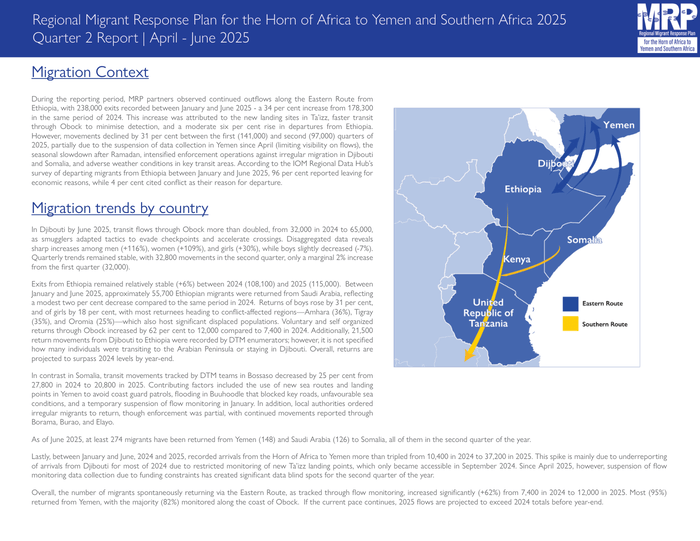Migrant Trends Along the Eastern Route: Insights from Ethiopia
Overview of Migration Patterns in 2025
Between January and June 2025, Ethiopia has witnessed a significant increase in migration along the Eastern Route, with a recorded 238,000 exits. This figure represents a 34% rise compared to 178,300 exits during the same period in 2024.
Factors Contributing to Increased Migration
Several factors have triggered this uptick in migration:
- New Landing Sites: Migrants are increasingly using new landing sites in Ta’izz, which enhances opportunities for smoother transitions.
- Quicker Transit Routes: Migrants seeking to minimize detection have been utilizing faster transit routes through Obock, leading to quicker journeys.
- Economic Motivations: According to the IOM Regional Data Hub, an overwhelming 96% of migrants indicated economic prospects as their primary reason for leaving.
Quarterly Trends: First vs. Second Quarter
Despite the overall increase in migration, there has been a noticeable 31% decline in the number of exits from the first quarter (141,000) to the second quarter (97,000) of 2025. This decline can be attributed to several key factors:
- Suspension of Data Collection: The cessation of data gathering in Yemen since April has limited insights into migrant flows.
- Seasonal Influences: A natural slowdown typically follows the Ramadan period, impacting the number of departures.
- Increased Enforcement: Enhanced crackdowns on irregular migration in Djibouti and Somalia have further deterred potential migrants.
- Adverse Weather Conditions: Unfavorable weather in critical transit areas has hindered migration efforts.
Reasons Behind Migration
Of those surveyed, a mere 4% cited conflict as their reason for departure, underscoring that the primary driver remains economic hardship. This highlights the pressing need for sustainable economic opportunities within Ethiopia to address the root causes of migration.
Conclusion
The migration landscape along the Eastern Route from Ethiopia is characterized by increasing numbers and complex dynamics. As countries grapple with these trends, understanding the motivations and barriers faced by migrants remains critical for developing effective policies and interventions.
For more insights on migration patterns and economic factors, visit the International Organization for Migration and explore their resources.
